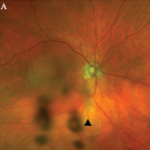Practical tips for the diagnosis, evaluation and treatment of a spectrum of conditions commonly encountered in a rheumatology practice are offered.


Mithu Maheswaranathan, MD |
Practical tips for the diagnosis, evaluation and treatment of a spectrum of conditions commonly encountered in a rheumatology practice are offered.

ACR Convergence 2021—On Nov. 5, Karen H. Costenbader, MD, MPH, professor of medicine, Harvard Medical School, and director of the lupus program, Brigham and Women’s Hospital, Boston, gave a whirlwind review of the most important clinical rheumatology publications of the past year. Testing New Medications for Rheumatic Disease ADVOCATE Trial of Avacopan Dr. Costenbader first…

Iryna Nemesh, MD, Saleema Kherani, MD MPH, Shikha Singla, MD, & William Wirostko, MD |
Syphilis is a chronic sexually transmitted disease (STD) caused by the spirochete Treponema pallidum. The clinical manifestations of syphilis are divided into four stages: 1) the primary stage, characterized by painless mucosal or cutaneous chancre at the site of infection that resolves spontaneously; 2) the secondary stage in which a generalized maculopapular rash and condyloma…

Ashraf Raslan, MD, Dorian Infantino, MD, Roman Zuckerman, DO, & Daniel Berlin, MD |
Giant cell arteritis (GCA) is a granulomatous vasculitis of large- and medium-sized arteries, usually affecting the cranial branches of the aortic arch. It is the most common vasculitis, with the highest risk factor being age. Accurate diagnosis and prompt initiation of therapy are of great importance to prevent serious complications, with the most feared being…

In early October, the FDA approved avacopan to treat anti-neutrophil cytoplasmic antibody associated vasculitis. Here are insights into the treatment’s risks and considerations.

Furuta et al. evaluated the benefits of reducing glucocorticoid doses during remission induction for patients with ANCA-associated vasculitis. The researchers found a reduced-dose-glucocorticoid-plus-rituximab regimen was noninferior to a regimen of high-dose glucocorticoids plus rituximab in these patients.

Michael Putman, MD |
Andy Abril, MD, a lead author of the ACR/VF guideline for Takayasu arteritis (TAK), discusses the recommendations for TAK.
ChemoCentryx |
On Oct. 8, ChemoCentryx Inc. announced that the U.S. Food & Drug Administration (FDA) has approved avacopan (TAVNEOS), an orally administered selective complement 5a receptor inhibitor, as an adjunctive treatment of adult patients with severe active anti-neutrophil cytoplasmic autoantibody-associated vasculitis (ANCA-associated vasculitis), specifically granulomatosis with polyangiitis (GPA) and microscopic polyangiitis (MPA) (the two main forms…

Michael Putman, MD |
Jason Springer, MD, MS, served as one of the lead authors of the ACR/VF guidelines for polyarteritis nodosa (PAN), and talks about the recommendations specific to PAN here.

Michael Putman, MD |
In this third article in the series, we talk with Philip Seo, MD, MHS, about eosinophilic granulomatosis with polyangiitis (EGPA).